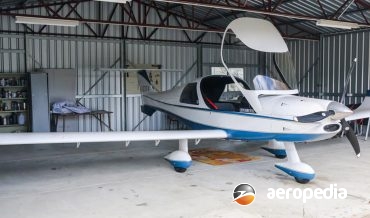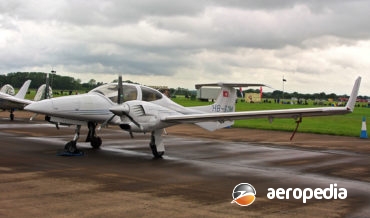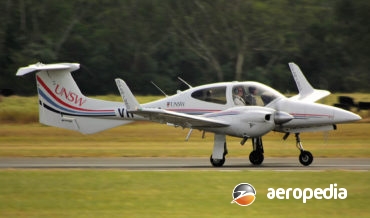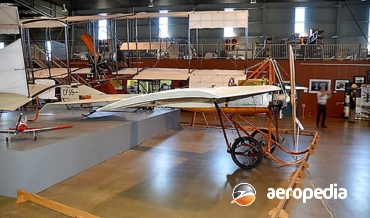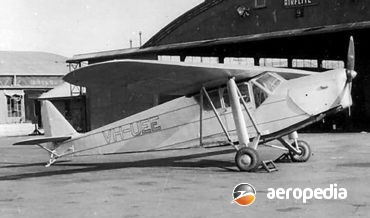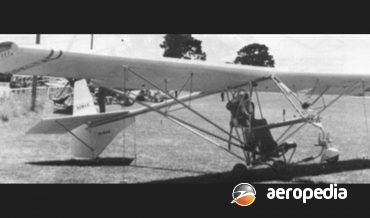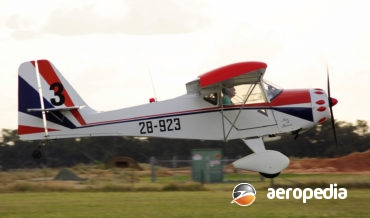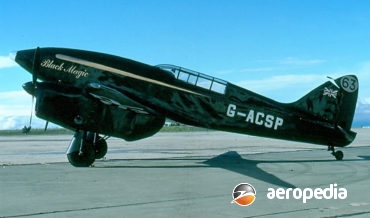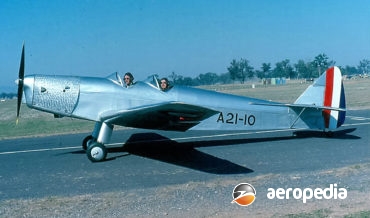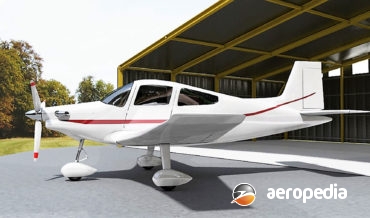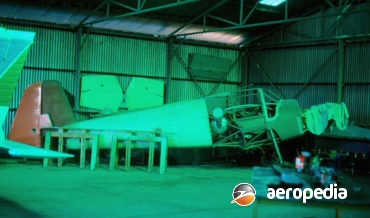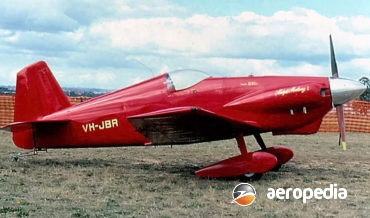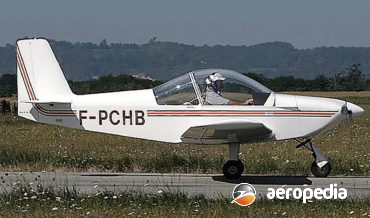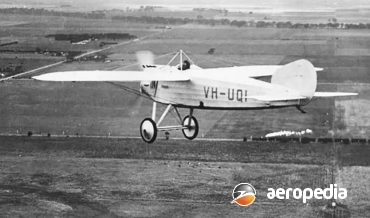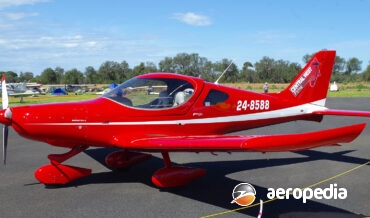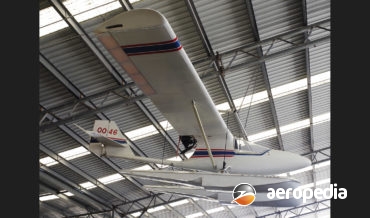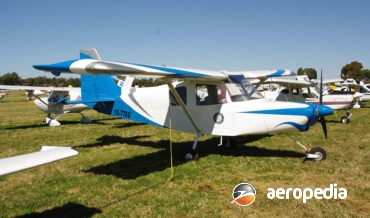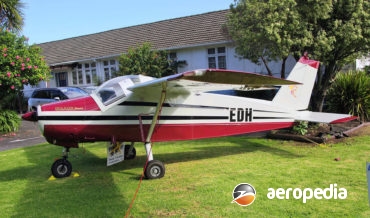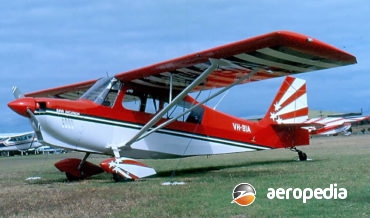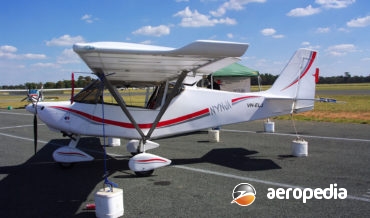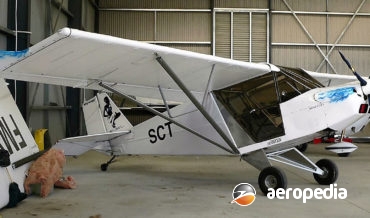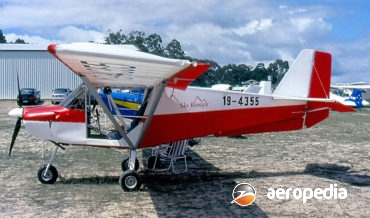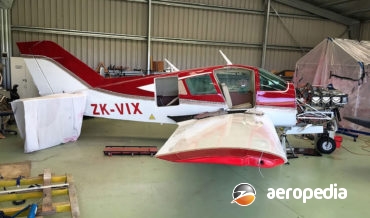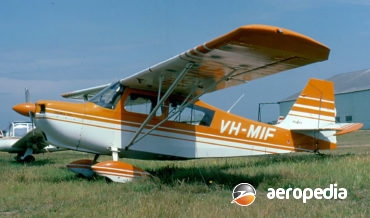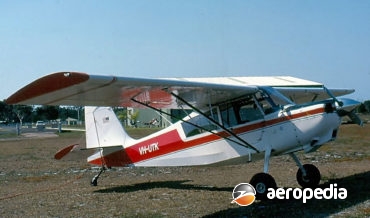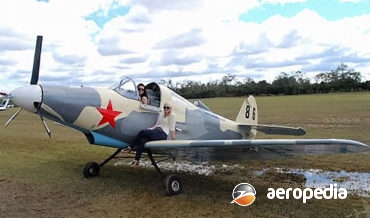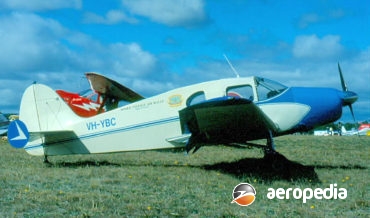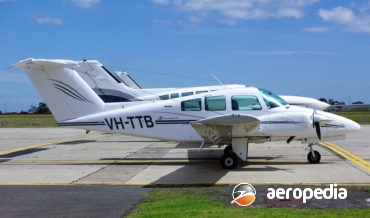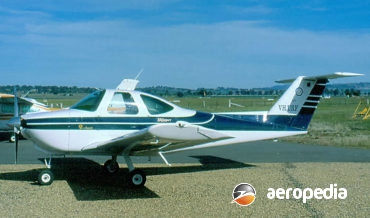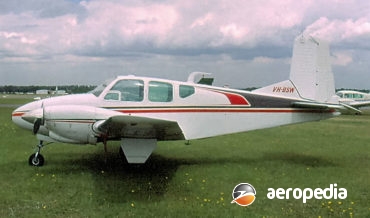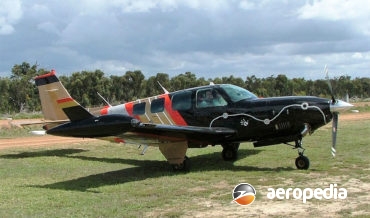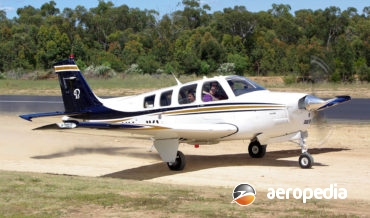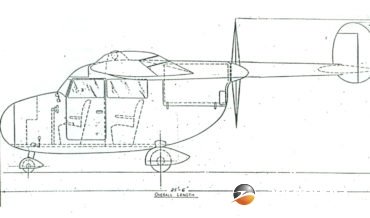All Contents
Contents
The Dyn Aero MCR Ute Pickup was designed and put into production in France as a two-seat cabin monoplane, being a development of a four-seat variant with the rear seats removed to permit the carriage of more cargo.
David C. Eyre
- May 8, 2019
The DA-20 series was introduced to the Diamond range of training aircraft, being a two-seat trainer aimed at the market for trainers before the DA-40 and DA-42 aircraft.
David C. Eyre
- May 8, 2019
The DA-42 Twin Star was developed by Diamond Aircraft Industries Gmbh at Wiener Neustadt in Austria from the DA-40 series and was built in the company’s plant in Vienna, the aircraft being unusual at that time in that it was fitted with modern diesel engines.
David C. Eyre
- May 8, 2019
In August 2008 Diamond announced it was introducing two new models of the Twin Star, the first being the DA-42-NG with 120-kw (170-hp) turbo diesel engines, and the DA-42-L360 with normally aspirated Lycoming IO-360 engines, the latter being specifically aimed at the US market.
David C. Eyre
- May 8, 2019
Armand Deperdussin, who founded the Societe pour les Appareils Deperdussin in 1910, obtained the services of Mr Berchereau as chief designer to develop a series of aircraft.
David C. Eyre
- May 8, 2019
The Desoutter series of aircraft was produced in two models by the Desoutter Aircraft Co Ltd at Croydon Aerodrome, Surrey.
David C. Eyre
- May 8, 2019
The prototype Chipmunk (CF-DIO-X), which was designed by W J Jakimiuk for de Havilland Canada, was flown for the first time on 22 May 1946.
David C. Eyre
- May 8, 2019
In the early 1980s Delta Technology in the United States produced a number of ultralight aircraft of high-wing configuration with conventional tail surfaces on a monoplane wing, the ailerons and elevators being operated by a control stick, the rudder being operated by pedals.
David C. Eyre
- May 8, 2019
Denney Aircraft Co was formed in 1985 in Boise, Idaho, to build a two-seat ultra-light aircraft, and this received the name Kitfox, being available in kit form, and 21 kits were delivered to constructors during the first year.
David C. Eyre
- May 8, 2019
The story of the DH.88 Comet series of racing aircraft is well known and has been told many times.
David C. Eyre
- May 8, 2019
Designed as a successor to the Moth biplane series of light aircraft, the Moth Minor had a similar performance to the Tiger Moth, although it had far less power.
David C. Eyre
- May 8, 2019
The Aircruiser is a low-wing, fixed-tricycle undercarriage four-seat monoplane of all-metal construction designed initially by Henry Millicer. Mr Millicer is well known for designing the Victa Airtourer and the Aircruiser.
David C. Eyre
- May 8, 2019
An aircraft known as the Brumby was designed and developed by Aero Composite of Bankstown, NSW, in conjunction with Spectrum Technology Pyt Ltd, as a high-performance sporting monoplane.
David C. Eyre
- May 8, 2019
The Bu 181 series was designed as a sports and touring aircraft, the prototype flying for the first time in February 1939.
David C. Eyre
- May 8, 2019
The Mustang I was designed by the late David Long, and was originally known as the Midget Mustang, being of all metal construction, the prototype flying for the first time in 1948.
David C. Eyre
- May 8, 2019
The Mustang I was designed by the late David Long and was originally known as the Midget Mustang, being of all-metal construction and flying for the first time in 1948.
David C. Eyre
- May 8, 2019
The Cherry BX-2 is a light two-seat, side-by-side, sporting amateur-built aircraft designed by Max Brandli of BX Aviation in Switzerland.
David C. Eyre
- May 8, 2019
The Bristol M-1C, designed by Captain F S Barnwell in 1916, was a breakaway from contemporary design standard because, as a wire-braced monoplane, it represented an attempt to produce an aerodynamically clean airframe.
David C. Eyre
- May 8, 2019
This series of light aircraft was designed by BRM Aero Sro in the Czech Republic to meet world LSA regulations, and is aimed at the flight training school, glider towing and recreational flying markets. It is built in a number of models, the NG-5 series being supplied as the Bristell
David C. Eyre
- May 8, 2019
Raymond Broome was interested in designing his own ultralight aircraft and in the late 1980s commenced to build an aircraft, this being along the lines of the Bedson Resurgam series.
David C. Eyre
- May 8, 2019
In 2009 Brumby aircraft of Cowra, NSW announced it was to build and market a high wing model of his successful Brumby low wing monoplane, the latter becoming known as the Model 600 and the new model became known as the Brumby High wing 610 LSA, the partially completed prototype
David C. Eyre
- May 8, 2019
The BO-208 series of light aircraft emanated from the prototype built in the USA by Bjorn Andreasson, and flown for the first time on 10 October 1958.
David C. Eyre
- May 8, 2019
Following Bellanca’s acquisition of the Champion Aircraft Corp in September 1970, production of the fully aerobatic model of the Citabria, the Model 7DCAB, was continued.
David C. Eyre
- May 8, 2019
The Nynja was designed by Phillipe Prevot and is a logical development of the company’s previous designs, the Skyranger and the Swift.
David C. Eyre
- May 8, 2019
The Skyranger Swift is a development of the Skyranger and optimised to take advantage of engines ranging from 60-kw (80-hp) to 75 kw (100-hp) and was basically a Skyranger with a new smaller sports wing, the company providing an aircraft which benefited from higher cruising speeds and more comfortable flight
David C. Eyre
- May 8, 2019
The Skyranger is an ultra-light aircraft that was designed in Toulouse, France, by Philippe Prevot in the mid 1990s.
David C. Eyre
- May 8, 2019
Allen Rupert Betteridge was born on 11 October 1892, and was educated in Broken Hill, NSW, becoming a motor mechanic.
David C. Eyre
- May 8, 2019
Designed by Vladimir Talanczuk, a Ukrainian-born aeronautical engineer, the Chinook over the years has been produced in a number of models, either single-seat or two-seat and it is a high-wing ultra-light aircraft, the prototype of which was flown for the first time on 12 December 1982 at Wizard Lake, Alberta
David C. Eyre
- May 8, 2019
The Viking and Super Viking single-engine high-performance touring aircraft with a retractable tricycle undercarriage was manufactured in the United States initially by Bellanca from 1967, 1,356 examples having been completed by the type production concluded in 1975.
David C. Eyre
- May 8, 2019
The Champion 7ECA Citabria was a modernised version of the Champion 7EC Traveller and was first produced by Champion.
David C. Eyre
- May 8, 2019
In 1971 the Bellanca Aircraft Corporation, which produced aircraft such as the Citabria and Decathlon (originally built by the Champion Aircraft Co), added a new model to the range.
David C. Eyre
- May 8, 2019
In the late 1930s Bell Aircraft Corp was looking at producing a shipboard variant of the Bell P-39 Aircobra, the design, known as the XFL-1 Airbonita, being powered by an Allison XV-1710-6 twelve-cylinder VEE engine installed behind cockpit driving a three-blade Curtiss propeller via a shaft through the cockpit.
David C. Eyre
- May 8, 2019
The Bellanca Cruisair series of light aircraft was designed by Guiseppe Bellanca and built by his company, the famous Bellanca Aircraft Corporation of New Castle, Delaware in the1940’s.
David C. Eyre
- May 8, 2019
Of similar appearance to the Grumman Cougar and Piper Seminole, like those aircraft the Duchess was designed as a low-cost, high-volume, production aircraft featuring honeycomb-bonded wings, handed propellers, and electrically-operated flaps and trim tabs. It was aimed at pilots stepping up from single to twin engined operations, and for those
David C. Eyre
- May 8, 2019
The Skipper was designed by Beechcraft to meet the needs of aero clubs throughout the world for a light trainer with around 75-kw (100-hp), with good economy of operation, and the capability of using lower octane fuels.
David C. Eyre
- May 8, 2019
Developed to meet the need for a twin-engine aircraft of similar size to the Bonanza, but much smaller than the Twin Bonanza, the Travel Air was essentially a scaled-down Twin Bonanza with the cabin of the Bonanza and the wings, tail, and undercarriage of the military trainer, the Beech Mentor.
David C. Eyre
- May 8, 2019
In the 1960s companies such as Soloy looked at re-engining aircraft with turbines and to this end Soloy developed variants of the Cessna 206 and 207, receiving orders in 1964 for 20 Model 206 aircraft.
David C. Eyre
- May 8, 2019
The Bearhawk Patrol is a development of the R & B Bearhawk light utility aircraft which was initially produced in plan form for the amateur aircraft market and is now one of three aircraft in the series which was initially designed by Robert Barrow.
David C. Eyre
- May 8, 2019
The A36 series was a development of the V35 ‘V’-tail series built with a conventional tail unit and with swept-back vertical tail surfaces, an extended cabin, and was first conceived in 1968.
David C. Eyre
- May 8, 2019
This was a light aircraft which emanated from the Beaufort Division of the Department of Aircraft Production in October 1945 and, known as the EC-1, was a proposal for the design and production of a four-seat light aircraft using knowledge gained during the production of the Bristol Beaufort bomber during
David C. Eyre
- May 8, 2019
Recent Comments
Archives
Categories
- No categories
Categories
- No categories
Latest Posts
Newsletter

